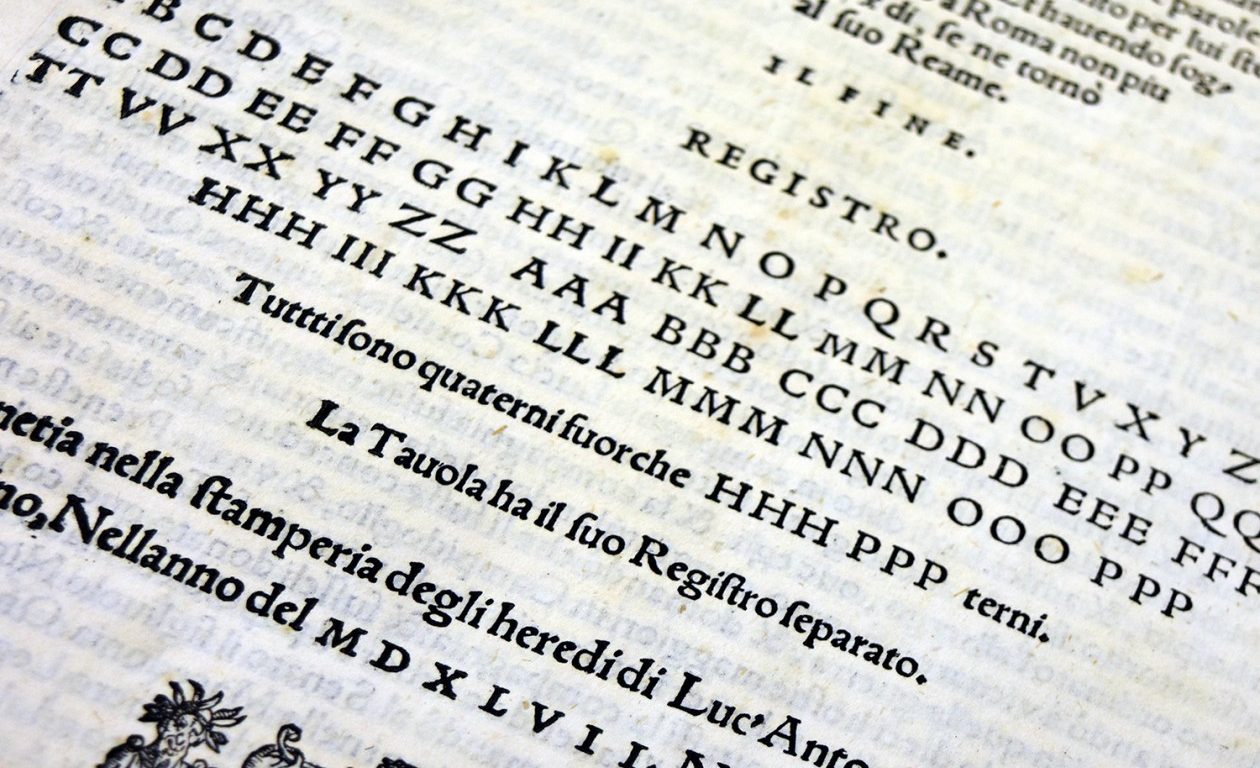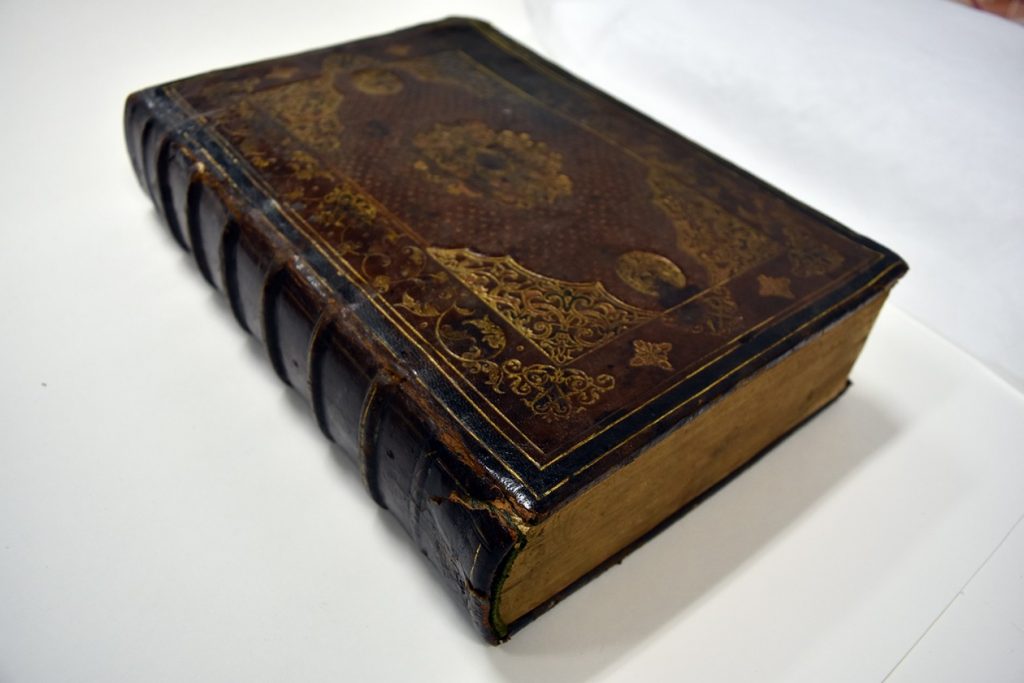
We’ve been searching the stacks shelves, looking in boxes, and checking the catalogue to find items that may have been lying unnoticed for some time. This week the object is perhaps the oldest item in the library – we can never be too sure as the date of some early works can be difficult to determine.
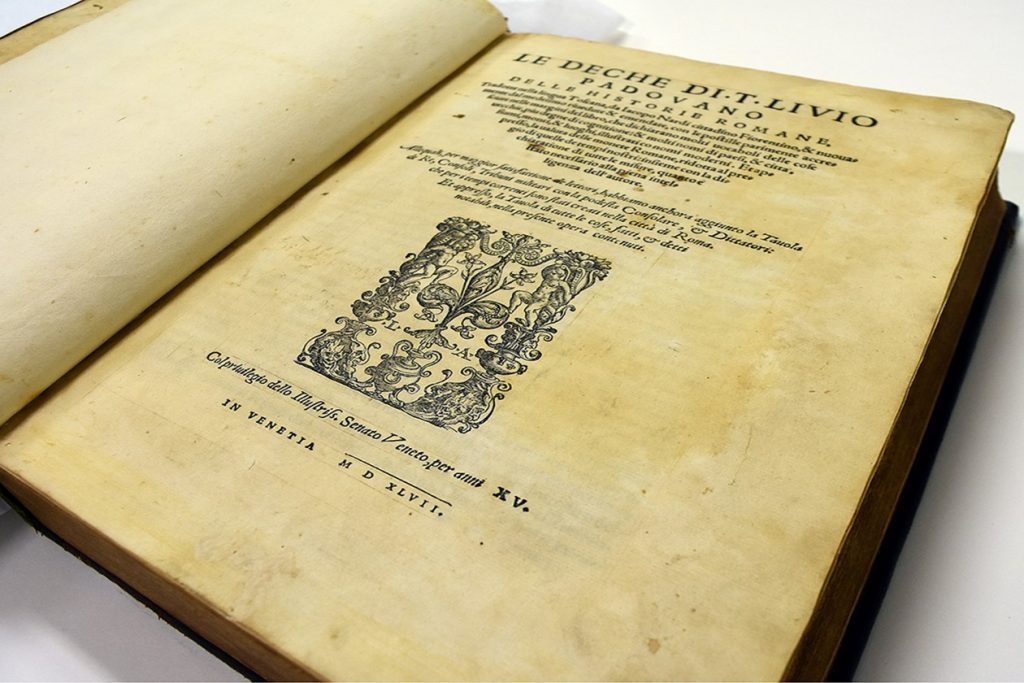
This beautiful old book, Le Deche di T. Livio Padovano: delle Historie Romane shows the date of publication beneath the publisher’s emblem on the title page, and also in the colophon on the last printed page of the book. Considering this book was printed around 1547, the pages are a fine example of the quality of paper used in early European printing. The pages are yellowing a little but they are still intact, supple and held in a strong stable binding.
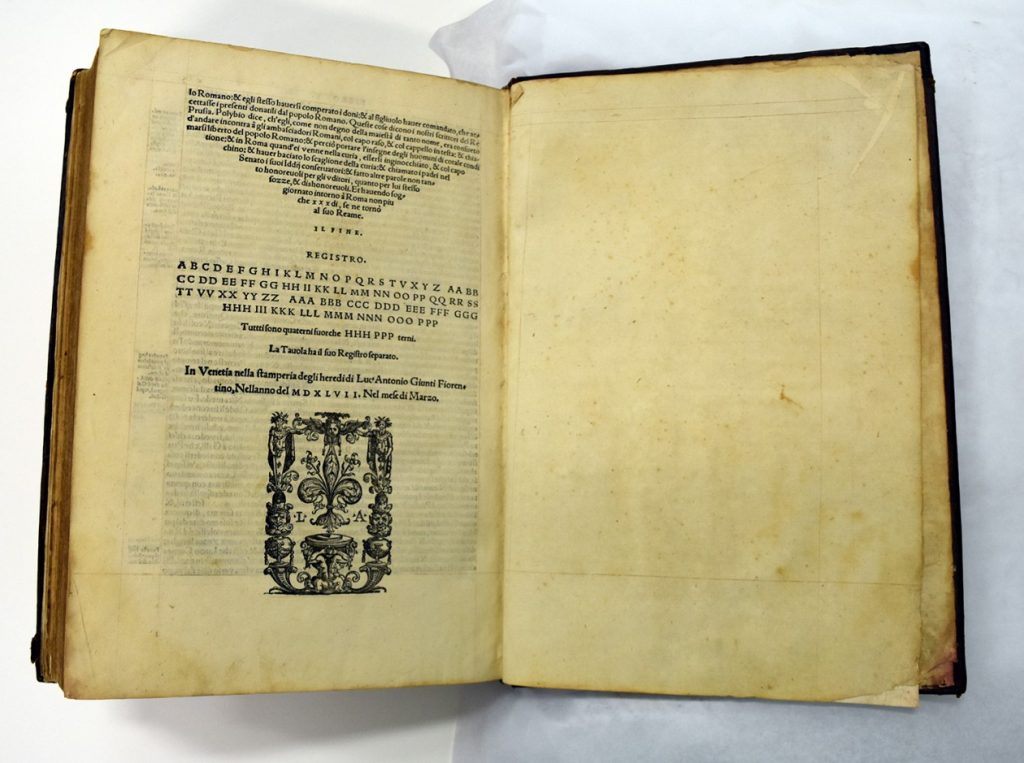
Printed in Venice, this is the Italian translation of the classical History of Rome, by the Roman historian Titus Livius, or Livy, who lived at the time of Augustus. His original history, in Latin, covered the history of Rome and the Romans from the early legends and foundation of the city, through to the reign of Augustus. The publishing details in the book also show that the translation was prepared by the historian Jacopo Nardi for the publisher, Heredi di LucAntonio Giunta – the heirs of LucAntonio Giunta.
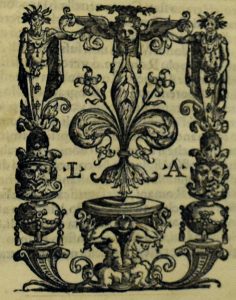
LucAntonio Giunti was a Venice based engraver and stationer who began publishing in the early years of printing in Italy, in 1489. His family company of printers and book sellers expanded and became an international success enduring for over a century.
This copy of Livy is bound in leather, and has no specific ownership indications on the binding. There are very few annotations or marginalia, nor are there any owner identification marks.
In 470 years this book has travelled far, from Venice to Perth, Western Australia, and to who knows where in between. It is a reminder of the durability of many older books, made from long lasting paper and bound by hand.
While the oldest books in the collection may have survived long journeys and benign neglect, these items are now housed in the controlled climate stacks of the John Curtin Prime Ministerial Library, where minimal exposure to light, consistent cool temperature and low relative humidity ensures their long term preservation.

An online version of this edition may be found in the Curtin Library catalogue.
References:
Pettes, W. A. (1974). An International Renaissance Publishing Family: The Giunti. The Library Quarterly: Information, Community, Policy, 44, 4 334-349.
Houston, Keith. (2016). The book: a cover to cover exploration of the most powerful object of our time. New York: W.W. Norton.
